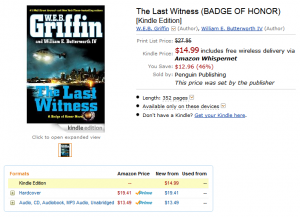I’m working on getting our edition of Pamela’s The Dubious Hills together, and I thought I’d blog about it.
Deciding whether, or when, to go to self-publishing is a big complicated issued and I think it’s very heavily dependent on details about the particular situation, yours, that book, and the current state of the market. I’m not going to try to write about that, it’s really not my area of expertise. John Scalzi has written about it at various times on his blog Whatever, go find those posts over there.
Since this is a previously published book (Tor books, 1994), the first thing of course is making sure we have the rights back. That’s long settled, but it’s important. It was close to being reissued by a publisher, in connection with the next book, but that fell apart (as industry conditions changed, I guess), and the rights are back with us.
The next thing we do is decide how to publish and distribute. We thought a number of goals were obvious: make both paper and ebook versions available, try not to be too dependent on a single distribution channel, and try to keep open the possibility of bookstore sales and library orders. This requires some extra effort.
(For somebody self-publishing a first novel, bookstore and library sales probably aren’t important, or perhaps what I mean is “possible”; luckily, it’s easy enough to add those distribution channels later if you get prominent enough to make it likely that you’d actually get sales from them. One of the important things to remember is that most of the deals you set up in the digital eco-system are short term and easily terminated, very different from traditional publishing.)
The really easy thing to do is to publish a paper version through CreateSpace and click the button to also send an ebook version to Amazon (Amazon owns CreateSpace), but that leaves us completely dependent on one company. It also means the book isn’t available on the various non-Kindle e-reader devices (except to people who know how to use Calibre), and can’t be bought from for example iTunes. One fairly easy solution to that is Smashwords, which will distribute to a bunch of places for you.
So that’s what we’re doing. Note that, while the first book we’re publishing ourselves is technically now available, it certainly has not been out there long enough to validate our strategy. I’m saying what we chose and why, but I’m not saying how well it’s worked, because we simply don’t know yet.
Putting out an edition of a previously-published book is quite easy. You’re not, at that point, looking for input of the “developmental editing” sort, and you generally aren’t looking for a new copy-edit either (if you’re doing a revised edition, that changes things). You need a new cover (or you need to acquire rights to use the old cover), but other than that it’s all there waiting to be published.
Of course, people don’t stumble onto it and buy a copy just by chance very often. The big problem in selling books today is being noticed. In our particular case, Pamela has a fairly small but relatively dedicated base of existing readers, and Pamela and I, and our friends, have enough web / social media presence that we can get the word out to most of the people who care fairly simply. That should give us a decent number of up-front sales (as I write this, we have 6 sales of the trade paperback of Juniper, Gentian, and Rosemary and 19 pre-orders of the ebook, within two days of it becoming possible to order at all, and before most of our attempts at promotion).
That strategy doesn’t do anything to push out into new readers. A lot of that happens because of people recommending the book to friends, though, and a new edition gets people talking about Pamela again (“buzz”), which reminds people who have been intending to try her books, and all these little things add up. Also, one reason for the timing on this being where it is is that Pamela is a guest at Vericon next month, which with luck will contribute to more buzz.
We’ve named our self-publishing operation Blaisdell Press, and it has a web page.
The next step will be getting a nice electronic manuscript file. Which I will deal with in another post.
